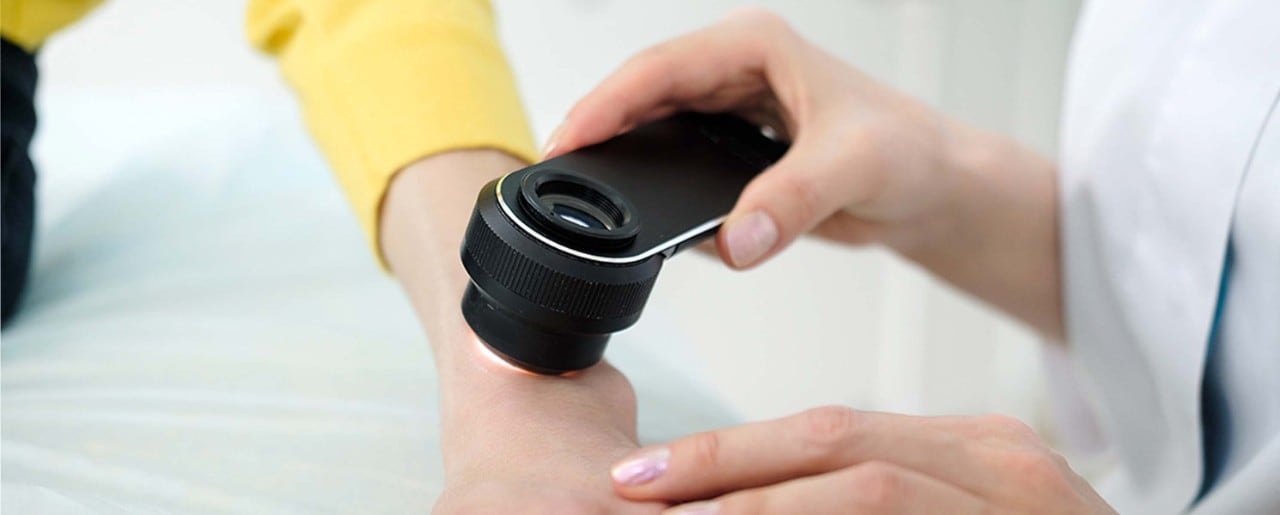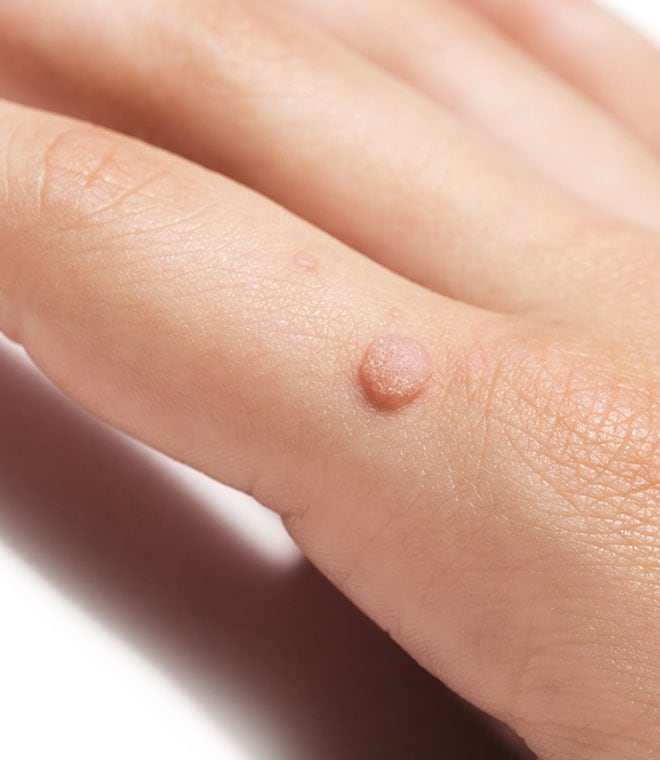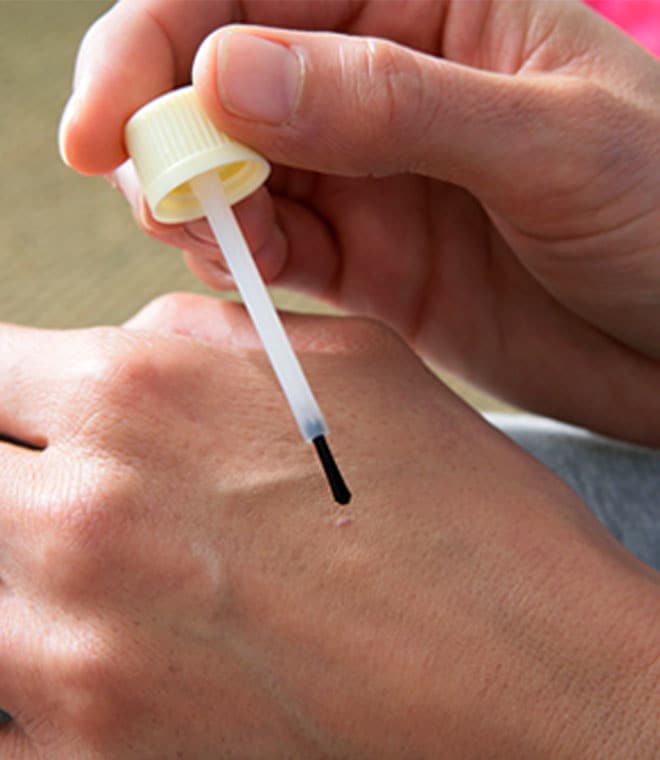Health
What are the different types of warts?
By Anna H. Chacon, MD, Fellow of the American Academy of Dermatology Jun 19, 2024 • 6 min
Warts are usually harmless, but they can grow to a substantial size, or in clusters, and some types of warts may be painful or embarrassing.
What is a wart?
A wart is a noncancerous skin growth that occurs on various parts of the body. Warts are caused by the human papillomavirus, or HPV. Warts are contagious and very common among children and teens, but they can occur at any age. Most people will have a wart during their lifetime — and some will have many.
There are several types of warts, including:
- Common warts: These warts are also known as verruca vulgaris, and they can grow to the size of a pea. Warts on hands and fingers are usually common warts. They’re hard, rough and scaly, and may have black dots on the surface that look like seeds. Common warts often form around broken skin from actions such as biting fingernails or picking at hangnails. Children frequently get common warts on the finger or hand, which can easily spread to the face. Facial warts can cause embarrassment.
- Plantar warts: These warts typically occur on the bottoms of your feet or the pad of a toe. Plantar warts are also known as verruca plantaris, and they can grow to a fairly large size, like common warts. Since your feet support your weight, the warts get pushed flat or inward when you stand or walk. Plantar warts on the foot can be very painful, and the inward growth makes them more difficult to remove than warts on hands and fingers.
- Periungual warts: These warts occur underneath or around the fingernails or toenails and appear as thickened skin, or they may look like cauliflower. Periungual warts may cause splits in the skin around the nails, which can be very painful.
- Flat warts: Also known as plane warts, flat warts are small, slightly raised warts that are smooth, flat-topped, and yellow-brown, pink or skin-colored. These warts generally occur on the faces of children and teenagers. They rarely occur in adults, but if adults do they get them, they usually appear along scratch marks or other breaks in the skin.
- Mosaic warts: When plantar warts grow in clusters, they’re known as mosaic warts. These warts are small and white when they occur on the ball of the foot or pad of a toe. They’re flatter than single plantar warts, but they can still be painful and difficult to treat.
- Filiform warts: These threadlike, spiky warts sometimes look like little brushes, and they often appear as facial warts, especially around the nose, eyes, neck and mouth. Filiform warts may become a source of annoyance and embarrassment but, luckily, there are treatments.
- Genital warts and anal warts: These warts are transmitted through sexual contact, and they can affect the genitals, anus, pubic area, inner thighs, lips, mouth, tongue or throat. Genital warts are small, hard nodules with a rough surface. Anal warts occur as soft bumps in or near the anus. They’re light brown or flesh-colored and may itch, bleed or discharge mucus. Genital and anal warts may occur inside or outside the vagina or anus. The HPV vaccine helps protect against genital warts, cervical cancer, and other cancers caused by HPV. You can ask your Walgreens pharmacist about getting this vaccine. You can also schedule an HVP vaccine online.
Do warts go away on their own?
In children, warts often go away without treatment. In adults, some warts may not go away until they’re removed with over-the-counter topical wart treatments or in your doctor’s office with a laser, freezing or surgical treatment.
Since there is no cure for the HPV viruses that cause warts, once the warts are removed, they may return to the same site or appear in a new spot. The sooner you have a wart removed after it appears, the less likely it is to return. Old warts can shed the virus into the skin, and new warts may grow in and around the area.
When to see your dermatologist
Although warts in children typically go away on their own, treatment speeds up healing and helps prevent the spread of warts to other parts of the body or to other people. Warts in adults often require wart treatment to remove them. If you or your child have warts, especially if they occur on the foot, visit your dermatologist to determine whether — and how — they should be treated. Some warts can be treated with over-the-counter wart removal products.
Clinically reviewed by Julie McDaniel, MSN, RN, CRNI, June 2024.
Sources:
- https://www.ncbi.nlm.nih.gov/books/NBK279586/
- https://fascrs.org/patients/diseases-and-conditions/a-z/anal-warts
- https://medlineplus.gov/ency/article/000885.htm
- https://www.aad.org/public/diseases/a-z/warts-treatment
- https://www.urmc.rochester.edu/encyclopedia/content.aspx?contenttypeid=85&contentid=P00326
- https://kidshealth.org/en/teens/warts.html
- https://www.merckmanuals.com/professional/dermatologic-disorders/viral-skin-diseases/warts#Etiology_v965364
- https://my.clevelandclinic.org/health/diseases/24899-plantar-warts
- https://my.clevelandclinic.org/health/diseases/4209-genital-warts
- https://www.mayoclinic.org/diseases-conditions/hpv-infection/in-depth/hpv-vaccine/art-20047292




